Mallorca, the jewel of the Western Mediterranean, summertime playground for the rich and famous during the sunny summer months is even better in the winter.
It’s true that stripping off on the beach, or submerging yourself in the azure waters may be a little further down the agenda in February than August, but with winter temperatures not unlike spring in Northern Europe and plenty of out of season sunny days there are many reasons to keep coming back once the summer throngs have packed up and gone home.
Hike the Tramuntana
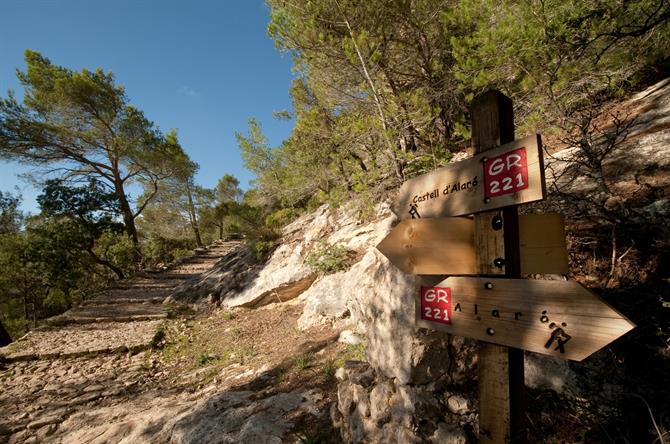
Away from the summer tourist resorts, Mallorca´s Tramuntana mountain range remains an undiscovered treasure for many visitors. It spans the entire Northwest coast of the Island from Andratx in the South to the statuesque splendour of the Formentor peninsula in the North. Declared a UNESCO World heritage site in 2011 the massif boasts six peaks over 1000 metres with many more just under.
Work continues to complete the GR221 footpath along the entire spine of the mountain chain, but the completed sections from Valldemossa through Deia, Soller and onto Pollença are well marked and mapped and have accommodation along the way in recently refurbished ‘refugios’ which are not as basic as the name suggests.
Dormitory style sleeping arrangements with a limited number of private rooms and hot food and wine provided in a single dining session. These are fabulous places, literally situated on the trail, many virtually inaccessible to non-walkers and all as cheap as chips. For those with deeper pockets and a taste for more refined living many of the hotels and guest houses in the mountains stay open all winter.
Cycling, follow in the wheel tracks of Sir Bradley Wiggins
Mallorca in the winter could have been custom built for perfect cycling.
Plenty of sunshine, and not a great deal of rain along empty roads entice cyclists in their tens of thousands from October to May. The island’s central plain Es Pla, provides easy riding between pretty country towns, and stunning countryside looking at its best in the springtime. Those looking for a bigger challenge can pit themselves against the roads of the Tramuntana mountains.
Steep and long climbs up switchback roads reminiscent of those in the Alps or the Pyrenees and the nerve jangling 13 km descent into Sa Calobra, and the lung busting slog back to the top bring most of professional cycling’s top teams and riders to the island as a base for their winter training, including Team Sky’s back to back Tour de France winners Sir Wiggo, and Chris Froome.
Canyoning/climbing
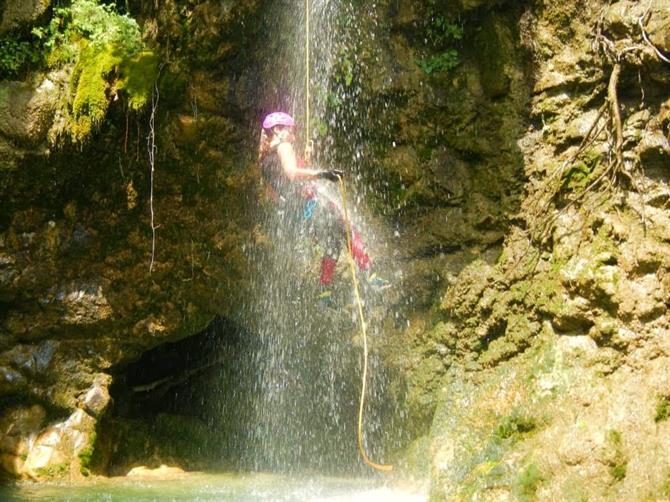
If climbing up, under, or lobbing yourself off the local geology is your thing then Mallorca really ought to be on your radar summer or winter. Largely composed of limestone, the rocks here are a veritable Swiss cheese for cavers and climbers.
The caves of Drach in Porto Cristo and in Arta are showcaves designed for easy access for the curious tourist, but there are plenty of rarely visited systems for ambitious cavers and cave divers, with more being discovered all the time. The relatively new activity of canyoning has brought the sport’s pioneers from their Alpine origins to explore the forty plus canyons available here on Mallorca. Simply these are deep and narrow notches carved by the rivers running off the mountains. They can only be explored by walking, abseiling, swimming, and jumping down them kitted out in wetsuit, hard hat, and climbing harness.
With many of these activities, you will need to hire local guides to keep you safe and show you all the best places. There are routes for the ambitions newcomers, to the mighty Sa Fosca canyon that entices the sport’s top exponents from all over the world.
Wine tours Mallorca
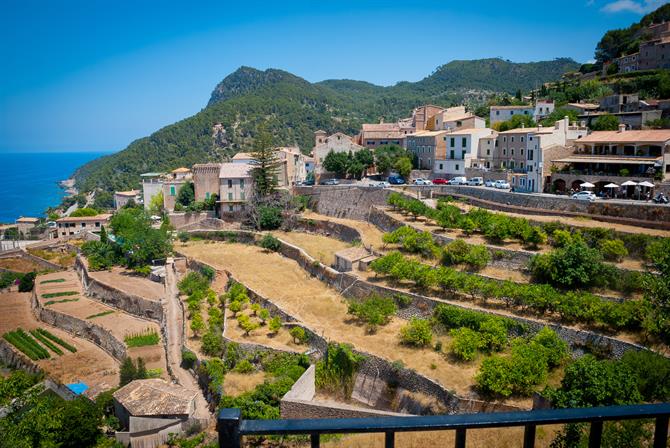
Mallorca’s wine industry has been steadily working its way back from the phylloxera plague that all but wiped out European wine production in the late 19th century. While it may not boast the volume and scale of production of France, the Spanish peninsula and the New World, they can certainly fight their corner on quality. Binissalem and Santa Maria (both a short ride from Palma), are the mainstays of the island’s viticulture, and there are many other pockets of small ‘boutique’ wine makers all over the island. The diversity of terrain and soil on such a small island produces a surprising variety of wine styles.
Most of the island’s 60 wine estates, offer tasting tours of the 300 different wines the island has to offer. From the industrial scale production of Jose Ferrer in the centre of the island, to the tiny co-op in Banyalbufar founded to re-establish the white Malvasia wine there is something to interest the serious wine buff, and casual tippler alike.
Almond blossom
Around the end of January and into February as Northern European skies remain the colour of beaten lead the skies of Mallorca are indigo blue as the ‘worst’ of winter has passed, the four million almond trees that decorate the island simultaneously blossom in a mix of white and pink flowers that look like a covering of snow, only much better. The story goes that they were planted by a Moorish ruler of the island who wanted to impress his Scandinavian queen, homesick for snowy winters. Believe that if you want, but don’t miss it whatever you do.
It is a perfect time to book a stay in one of the manorial stately homes that were once the farmhouses of landowners that farmed the almonds, olives and oranges that were the cornerstone of the island’s agriculture. Now many have been transformed into luxury boutique hotels, each very different in character. Most serve high class dining: often modern interpretations of traditional local fare. Most also offer top end luxury with spa facilities and beauty and massage treatments. Perfect timing to banish those mid-winter blues.
City break to Palma
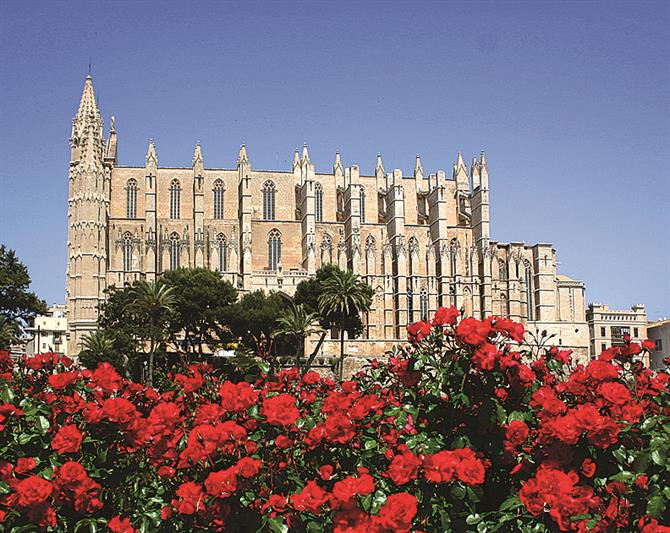
Mallorca and the Balearic Island’s regional capital city Palma is often overlooked by the summer tourist who is keen to hurry away from the airport, strip off, and hit the beach, but they are missing a treat. With a permanent population of nearly half a million, Palma has just as much bustle about its streets: winter and summer alike. You can meander along the maze of streets in the well preserved medieval old town surrounding the La Seu cathedral with views over the Mediterranean and adjoining summer palace of the King of Spain. Go and have a browse around the trendy Santa Catalina district, a vibrant centre of culture in diverse section of town, with some great bars and modern fusion restaurants.
The city has more than its fair share of art galleries, with permanent displays of work by Salvador Dali and the preserved workshop and gallery of Joan Miro, one of the island’s most famous sons. Well worth a visit is the Es Baluard museum and gallery. Less than ten years old it is literally built inside the old walls of the city and is an architectural blend of modern materials and the limestone of Palma’s old fortifications. If you like to shop, then you will love to shop in Palma, Europe’s most elegant brands are on display in the boutiques on Jaime III, but there are many hidden jewels to be unearthed by the inquisitive. With plenty of winter sunshine, outdoor dining is popular right the way through the year, particularly around the Passeig Born, a typically Spanish “ramblas” lined with plane trees running through the centre of the city.
Soller Train
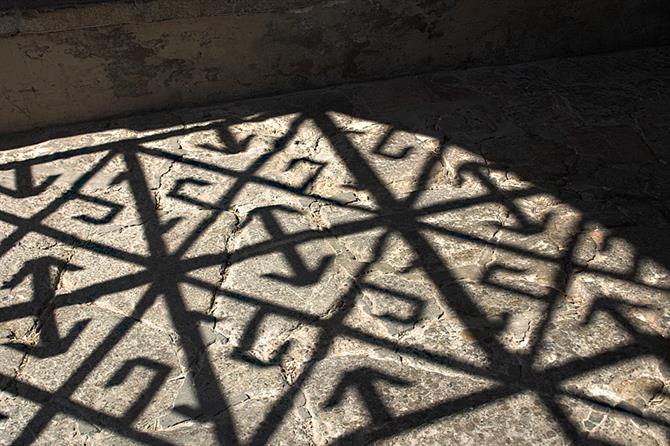
Soller on Mallorca’s mountainous North coast is a unique place summer or winter, but is perfect for an out of season short break. By far the best way to arrive is on the old train from Palma. It’s a real antique fitted out in wood and leather. ‘Red lightning’ has linked Soller to the island’s capital for just over a hundred years, and is still going strong through the 13 tunnels and countless bridges that traverse the mountain back drop that has kept Soller isolated from the rest of the island.
The town of Soller itself is 1920´s elegance with distinctive architecture and a handsome tree-lined square that remains a hub for the town. There is no better spot for some al fresco dining and a glass of freshly squeezed juice from the oranges that have made the Soller valley famous. Each street ends with a vista of the ring of thousand metre peaks that frame the town.
Open sided trams clank through the square on their way to the sister port a short ride away. There is accommodation to fit most budgets, and some very grand hotels in Soller, and the port each with their own unique character.
January fiestas of Sant Antoni and San Sebastian
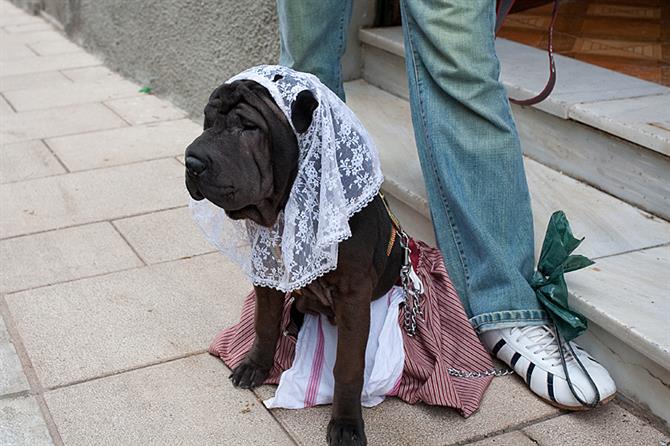
Like most of Spain, each town in Mallorca, however small has its own distinctive fiestas and local traditions all year round. Two of the best of these are held right across the island in January of each year and unlike the summer fiestas that are mobbed by tourists, these are a real chance to see the locals let their hair down. Sant Antoni is the patron saint of farm animals. His feast day is held around the 17th of January each year. While each town has its own variation on a theme, there is usually a parade of animals, dogs, cats, pigs ducks, hamsters, you name them, scrubbed up and looking their best for a blessing from the priest.
The ever present “Dimonis”, (devils), are there in fancy dress ready to scare the pants of the children as well! Head for Pollenca, Arta or Sa Pobla for the most famous Sant Antoni festivities.
The next day, or next weekend depending on the year, San Sebastian is celebrated with fire. Bonfires are lit on the streets and squares and “torradas”, or open public barbeques are erected where you will have to elbow your way into a corner of flame to grill your “Butifarron”, a local sausage, while sloshing back the vino to keep the January chill at bay.
Golf
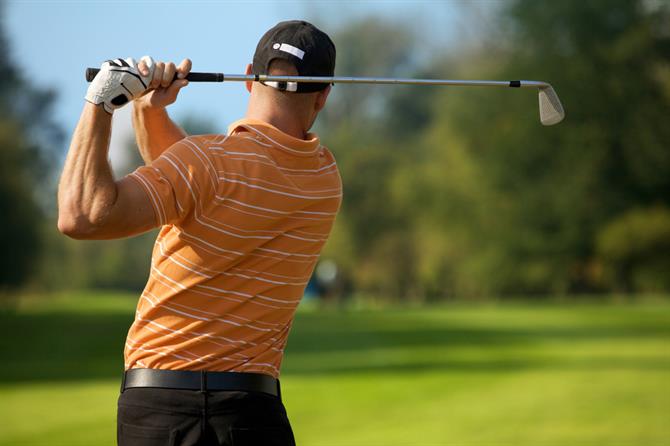
300 days of sunshine annually is a real draw for Northern European golfers looking for a change to rain lashed courses and standing water. Mallorca has 22 different courses spread across the island to match most abilities. Fancy teeing off from amongst the palm trees in Alcudia, or the pine backdrops and views to Palma from the Royal Bendinat course in the Southwest? Many also have hotel accommodation right next door.
Check out the upmarket Son Vida on the outskirts of Palma. You can play three courses, Son Quint, Son Vida and Son Muntaner right next door to each other with two luxury hotels just off the fairway, all less than 30 minutes from the airport.
Markets
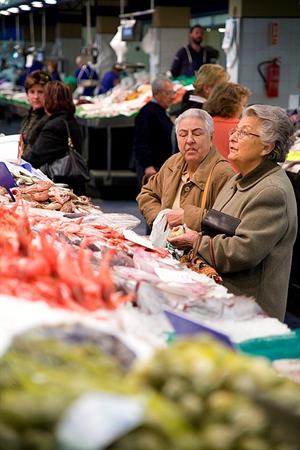
Doing the weekly shop at the local market is still very much in the DNA of Mallorcan life, and they continue all year round. There are plenty to choose from in all corners of the island seven days a week selling bric a brac and antiques, shoes, local food as well as the chance to top up the grocery cupboard. North Mallorca’s main city Inca hosts the largest weekly market on the island, and is great for leather goods and crafts as well as local food produce and local olive oil, cheese and charcuterie.
You can find two permanent daily markets in Palma, starting early and finishing just in time for a late lunch. Mercat Olivar is the bigger, selling huge varieties of fruit and vegetables as well as many locally produced artisan delicacies. The seafood hall is a vast assault on the senses with hundreds of customers jostling with traders over the freshest of the day’s catch. Take time to drop in on the much smaller Santa Catalina market to the West of the old city walls. While it may be smaller it lacks none of the bustle or charm and is great spot for tapas at one of the stand-up bars that fringe the market hall.
